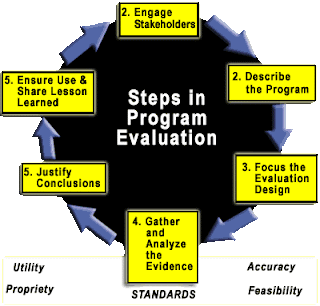
What is program evaluation?
Program evaluation is related to the collection of analyzing and using of information about activities, characteristics of programs; this allows to informed any doubts or judgments about program improvement and decision about future programming; these help to make a very good program evaluation. There are three primary purposes of evaluation; first are program planning, second program development, and third program accountability; this helps or is as a guide to develop or make a better a program evaluation.
Program evaluation is used in the public and private sector and is taught in numerous universities.
Program evaluations also can involve quantitative methods, methods of social research or qualitative methods or both. People who do program evaluation come from many different backgrounds: sociology, psychology, economics, and social work. Some schools have specific training programs to do program evaluation.
What we can evaluate?
There are many things that we can evaluate, for example, an advertisement, an exam, an activity, a presentations, the policy, the government, the economic and social position, a company, to teachers, and so on.
If you want to know if your product (or anything you are interested in knowing), is accepted, or if it’s selling, is a very good idea to use or to make it through survey, observation, interview, statistical and inferential analysis, and others.
But, what are the evaluation’s key processes?
There are seven key processes and conclusions:
v Organizing
v Processing
v Analyzing
v Synthesizing
v Interpreting
v Drawing
Program evaluation is helpful because you can understand or increase the impacts that product or services have on customer; also improve delivery mechanism to be more efficient and accessible and less costly. Facilitate management’s really thinking about what the program is all about; verify results that can be used for public and private relations and so on. Evaluation is very important to do because can identify program strengths, weaknesses, threats and opportunities in order to do a better job.
Some evaluation strategies are as follow:
v Scientific-experimental models
v Management-oriented systems models.
v Qualitative/anthropological models. This evaluation strategy is about the importance of observation, the need to retain the phenomenological quality of the evaluation context, and the value of subjective human interpretation in the evaluation process.
v Participant-oriented models. This is mainly related to the evaluation participants or is related to the central importance of the evaluation participants, especially clients and users of the program or technology.
Also there are many types of Program Evaluation. Within these are:
v Goals-based evaluation: this type includes eight questions to ask yourself when designing an evaluation.
v Process-based evaluations: this is about the process by which you understand how a program works, what are the procedures and so on. Here include twelve questions to ask yourself when design and understand the process in accomplish program evaluation.
v Outcomes-based evaluation: is mainly about, or is focusing
the importance for nonprofits.
In this type of program evaluation there are seven steps that we must accomplish to do an outcome-based evaluation.
« For what purposes is the evaluation being done?
« Who are the audiences?
« What kinds of information are needed?
« From what sources should the information be collected?
« How can that information be collected?
« When is the information needed?
« What resources are available?
All this information above is very important to take it into account, because it will help to design better and understandable assessment program. So keep all this information to develop your program evaluation; remember that you can make a program evaluation of anything and in any area.


No hay comentarios:
Publicar un comentario